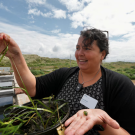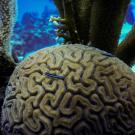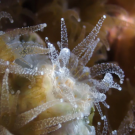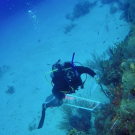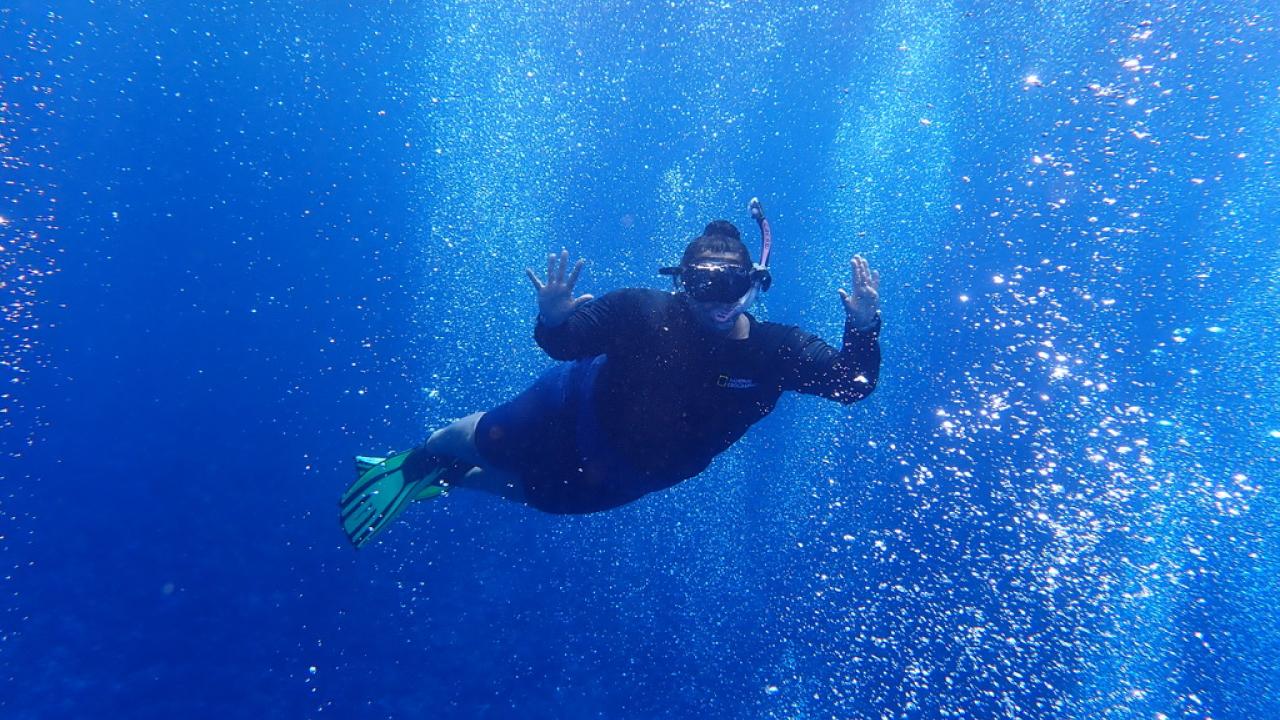
Researching Corals in Bodega Bay?
How Anya Brown Studies Connections in the Ocean Through Microbes
Quick Summary
- Corals and seagrasses are connected through their microbial relationships—and it may be the key to further understanding the impacts of climate change on marine communities.
What do you picture when you think of the California coast? Perhaps it’s the redwood-covered bluffs that plummet down to crashing waves, or the forests of kelp swaying along with the current. But the one thing that might not have come to mind has a surprising presence at UC Davis’ Bodega Marine Laboratory (BML): corals.
That’s right—this conglomeration of little organisms might not be building lush, tropical reefs in California waters, but that doesn’t mean there isn’t research being done on them here. Dr. Anya Brown, a researcher and professor in the College of Biological Sciences at the University of California, Davis, has been studying corals for almost all of her academic career. And this didn’t stop once she started working at the Bodega Marine Lab. In fact, it expanded.
As a faculty member in the Department of Evolution and Ecology, Dr. Brown examines the relationships between organisms in an ecosystem. But not just any organisms: she’s mainly focused on microbes, those itty-bitty microscopic creatures found nearly everywhere on Earth. Though small, they play an enormous role in species and environmental health. By studying how microbes respond to stress, Dr. Brown investigates the impacts of climate change on marine species and how it affects ecosystems.
All One Ocean
So, why Bodega Bay? Though it may seem inconvenient to study corals hundreds of miles away from reefs, Dr. Brown has a reason. Despite spending much of her academic career with corals, she is not just a coral ecologist: she is a marine community and microbial ecologist. She specifically sought out a place where she could connect her knowledge of the ecology of coral reefs with different local ecosystems. If there’s one thing that the ocean is full of, it’s microbes—and Bodega Bay is a treasure trove.
To examine how microbes affect local ecosystems, Dr. Brown looks at seagrasses. Like corals, they are a foundation species; this means they play an important role in the physical structure of their ecosystem, as well as creating habitat for other organisms. By examining the similarities between seagrasses and corals, she better understands how microbes affect resistance and resilience to stressors like disease and climate change. Despite the differences between temperate seagrass and tropical corals, she asks questions about both to see if she finds the same types of answers.
“It's all one ocean,” she states. “So whether it's something that's nearby or whether it's something that's far away, it connects us all.”
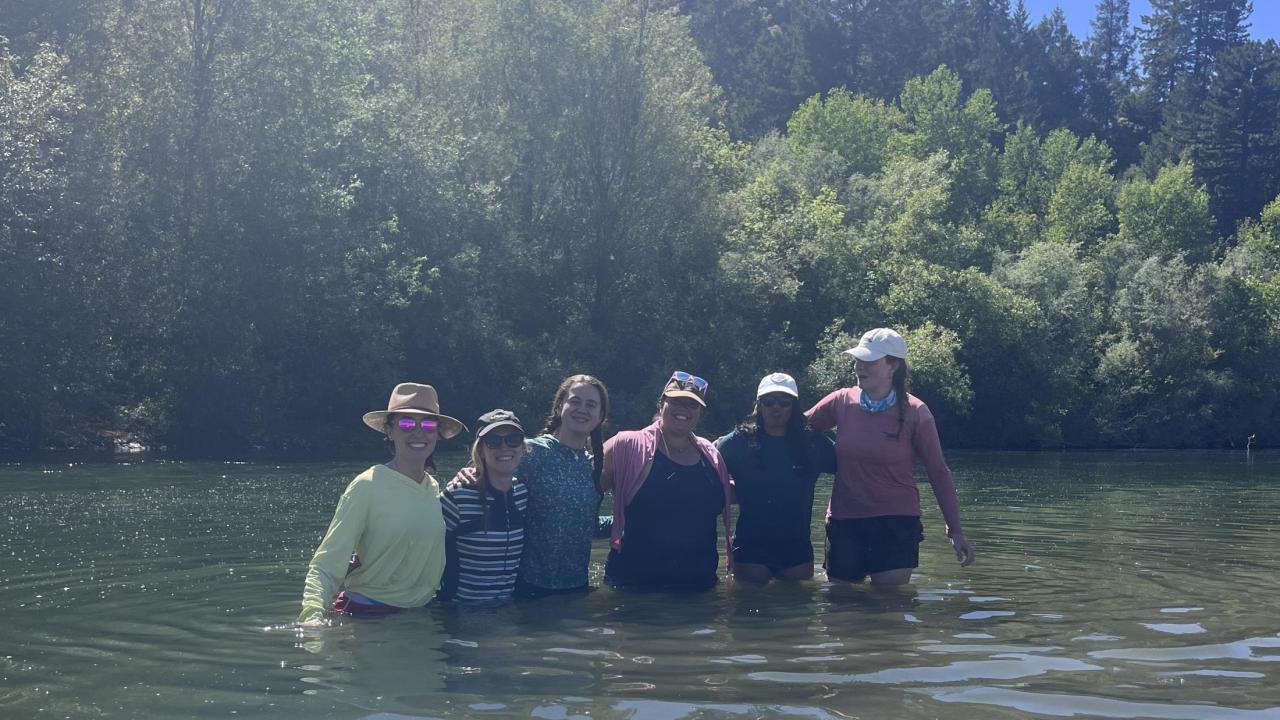
Studying seagrasses is easier for Dr. Brown in a lot of ways. They can be found right off the coast of BML, and studying disease is a less complex process—she and her grad students can grow specimens right in the lab. However, that doesn’t mean that they don’t have their caveats: they’re less rare and therefore get less public attention. There is certainly something spectacular about a reef full of vibrant colors and intricate shapes, but seagrasses aren’t to be overlooked. They hold their own against climate change, having the ability to store and sequester the carbon found in aquatic environments (known as blue carbon).
But Dr. Brown isn’t done with corals just yet. “I think when we think about things in the context of climate change, corals are—well, I think of them as like canaries in the coal mine,” she states. Corals are very sensitive to temperature and stress, causing them to react to environmental changes and show that something is off-balance. “We're in the fourth global bleaching event, and global bleaching events didn't really exist before the 1980s,” she continued. Though coral microbes may have a more visible reaction to climate change, seagrasses are also very much affected. By studying both, she hopes to understand the wider significance of microbes in ecosystem health.
A Full Plane… of Equipment
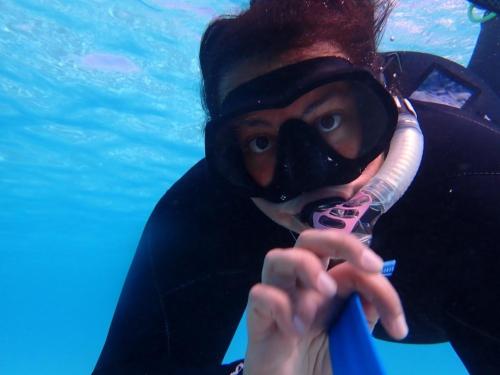
With the next coral reef hundreds of miles away, Dr. Brown and her team find themselves packing suitcases with scientific equipment, dive gear, plenty of clothes, personal items, snorkel masks, spectrometers, and then sometimes not being able to even get on the plane because of a giant cooler (the finest research technology). Other times, they work out of Airbnbs instead of labs, borrowing equipment from collaborating organizations and labs and hauling in everything else they need by car. There’s a lot that goes into making sure all of the data is gathered—they can’t go back and collect something missing once they’re back home.
However, there’s more to international fieldwork than just logistics. “One of the things when you're working in a different country, or really any different place, but particularly another country, is you just want to be aware that you're there as a visitor,” Dr. Brown says. By frequently working with Kōrero o te Ōrau, an indigenous-led environmental NGO in Rarotonga, she’s part of a symbiotic international team. From being familiar with governmental regulations to providing a unique perspective, local researcher partners allow for a deeper understanding of the ecosystem Dr. Brown is working with.
From the Field to the Classroom
Back in California, Dr. Brown had taken on a new venture: teaching. Though integrating teaching into research is a natural path in higher education, it’s no easy feat. “When you're a grad student, you have a little bit of teaching if you're a TA, a little bit of research, a little bit of service. So you get a taste of what it's like to be a professor—so you think. And then you start as a professor, and now you're in charge,” she describes. Suddenly, she found herself planning curricula, budgeting for her classes and managing a team of graduate and undergraduate students.
Working with students has shed light on her own research; the results of student-led research projects at BML have generated new questions for Dr. Brown (and vice versa). She hopes that this cycle of information and inspiration will continue with her and each batch of new students. Despite the challenge, Dr. Brown’s experience has been eye-opening—“It’s like everything I've been preparing for, but then also so much more.”
Learn More About Anya's Research
Learn More About Anya's Classes
Life in the Sea (EVE 012)
This lower division class is meant for anyone interested in learning about the ocean. Taught at UC Davis, you will get an introduction to marine biology focusing on ecology and evolution, and human impacts on the sea and its inhabitants.
Coastal Marine Microbes (EVE 113)
Taught during Fall Quarter at BML, this upper-division class is part lecture, part lab and part field. Students have the opportunity to learn about local ecosystems and understand the roles of microbes in their ecology. The class includes opportunities for conducting microbial ecology projects, including collecting and analyzing microbiome data, and experimenting with host-microbial interactions based on species and environments around Bodega Bay.
Fall Quarter at the Bodega Marine Lab
As one of the instructors in this program, Anya Brown helps students dive headfirst into marine science research and field work during ten weeks of learning on the coast.
About the Author:
Lila Magbilang is a Biological Sciences Major and Professional Writing Minor in the class of '26. Growing up in San Francisco with the ocean in her backyard, marine ecosystems hold a special place in her heart. She is especially interested in ecology, conservation and genetics, and is the CMSI Writing Intern for 2025. Aside from science writing, she enjoys hiking, rock climbing and camping.

